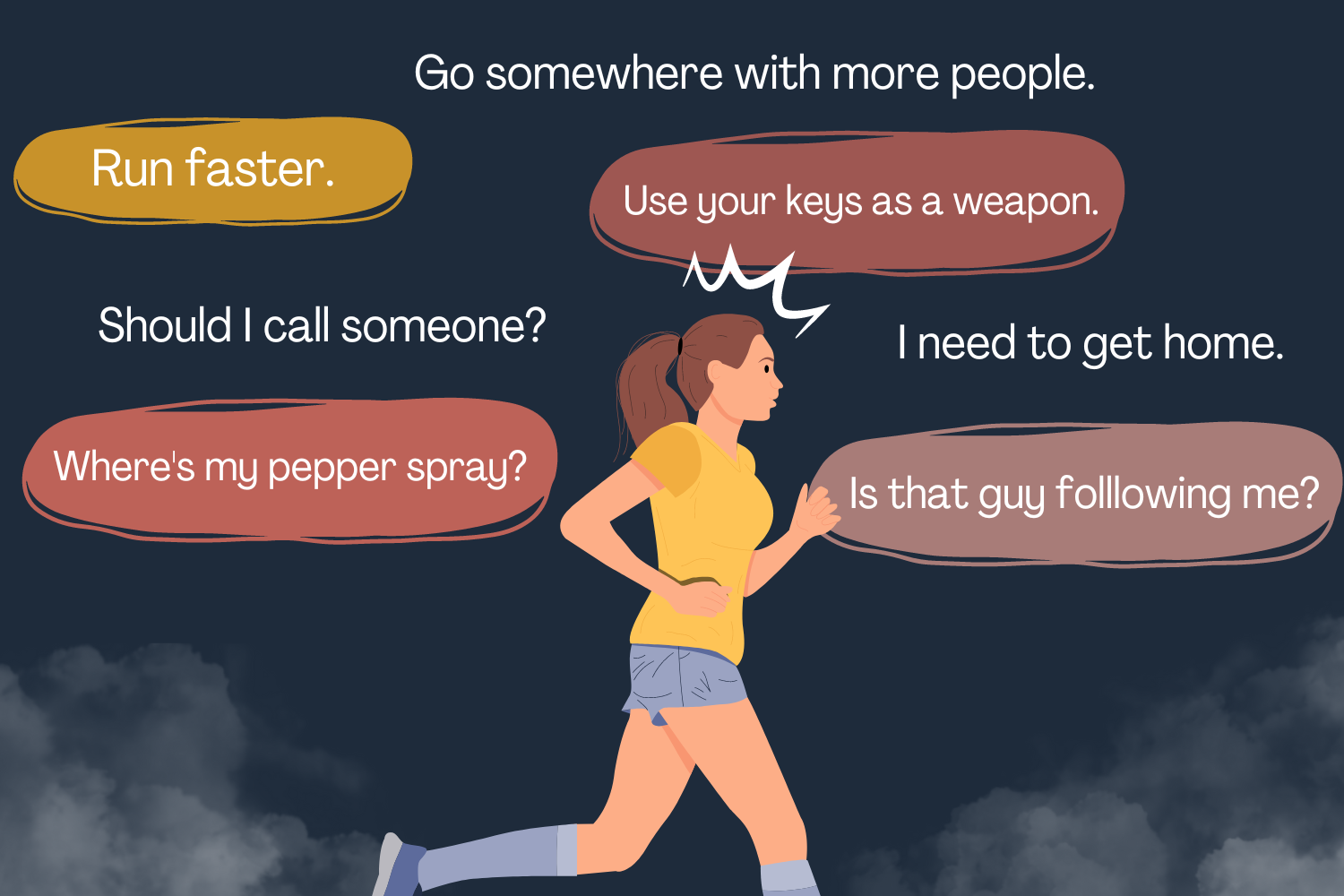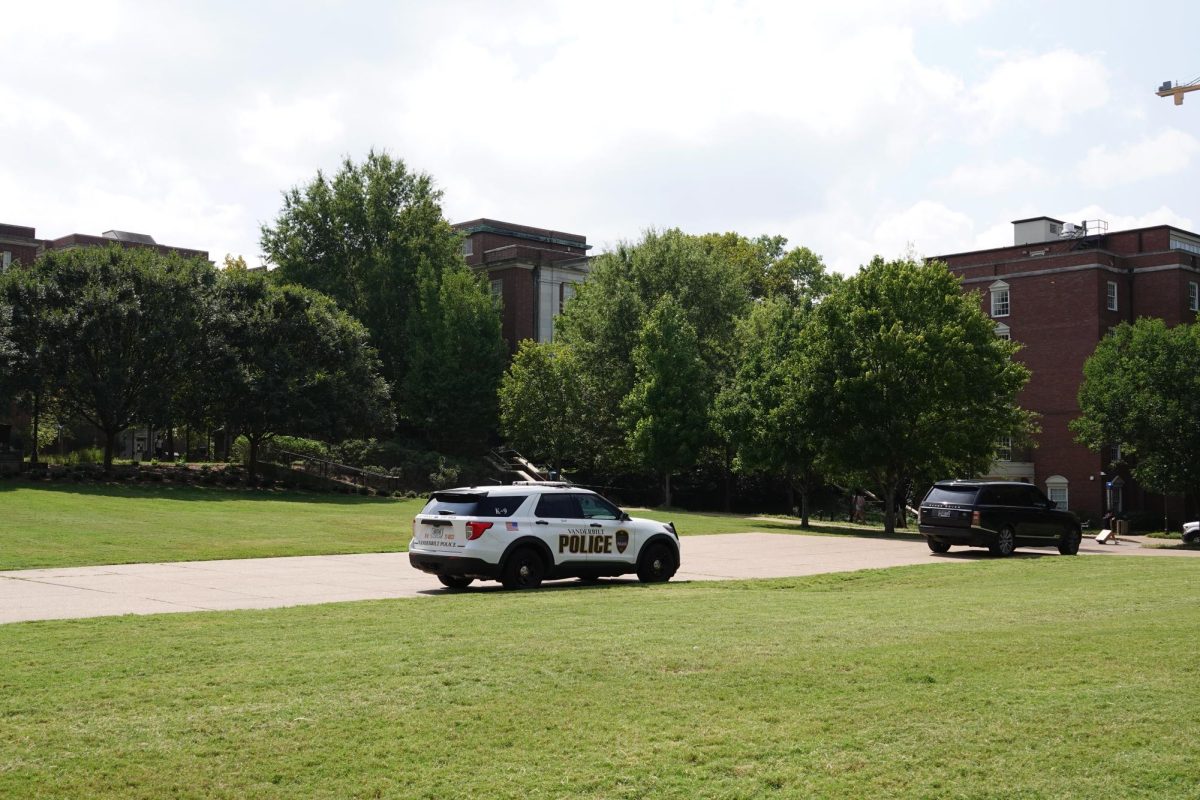Editor’s note: This piece contains mention of sexual harassment.
Growing up, my dad and I made a habit of running together early in the morning before work and school. We would wake up and stumble around in the dark searching for something that resembled a running shoe and make our way onto the front lawn to stretch. We’d groan and complain about how early it was and how painful our first steps were. By the time we were a few miles in, we’d forgotten all about our early alarms and coursed down the middle of empty streets watching the sunrise.
Sometimes we would run as the sun set on Friday afternoons. We would shed the weight of the week and lace up our shoes–exhausting ourselves as best we could. We would pound our legs into the pavement to release the stress of the week. We watched the sky explode in yellow, orange and pink and thought about the fresh Challah bread waiting for us at home.
As we rounded our street corner, I would take off flying toward home with my Dad on my heels.
When I left home in the middle of a global pandemic, I spent months running the empty streets of my new hometown of Nashville. In the middle of so much darkness and heaviness around me, it became an escape. It was subtle and quiet, but always present: It was a vague desire to move–to put one foot in front of the other and go forward. To get out of bed, out of the dorm in which I took all of my classes online, away from the masks and the quarantines and the loss. My brain, which was usually filled with overwhelming anxiety, guilt and longing for my pre-pandemic life, was finally quiet when I ran.
I started running further and further and never stopped. I ran through deserted city streets in the pouring rain, layered sweatshirts in single-digit temperatures and memorized parallel street names. Saturday long runs went from six miles to eight to 14. Sophomore year, I ran my first marathon. I found strength, independence and purpose in driving my feet forward and never looked back.
Like many female runners, the very act of doing one of the things I love most in life comes with unrelenting worry and constraint. Running on city streets, visible and vulnerable, I have never gone for a run without a reminder of my gender. Just as my legs learned how to push me up the last hill, my muscles learned to tense up when men honked their horns as they passed me. Just as I learned to use that nervous feeling in my gut on the starting line to propel me through a race, I learned to recognize the gut feeling that told me a trail wasn’t safe to run on alone. Whistles from men on the sidewalk have become just as much a part of my morning run as lacing up my shoes and stretching my legs.
On my runs—which, summer vacations and trips home aside, are usually solo—my mind hums with questions. Would it be better if I didn’t cross through the medical center? Why is the truck behind me on this street going so slowly? If I need to get away, which way would I sprint? If I need to turn and fight, would I kick, tackle or punch? Why did that man up there cross the street?
One time, while I was running down West End Avenue just before the sun rose, a pickup truck slowed to a crawl beside me. I began to lengthen my stride, my footsteps echoing off nearby buildings as the city still slept. The car was a black Ford with a loose bumper and I remember trying to read the letters on the license plate. The male driver rolled down his window and started to yell out to me. When I sped up, he accelerated too. He began to yell grotesque, sexual descriptions of my body and asked for my number and if I wanted a ride. He was holding an empty beer bottle as he drove; I watched it crash against the curb at my feet. When I turned away from his car, the man yelled obscenities at me and sped off.
Mollie Tibbetts was also a college runner spending her summer back home in Brooklyn, Iowa when she went for an evening jog. The next morning, Mollie’s body was discovered in a nearby cornfield. Mollie was murdered by a man who circled her several times in his car before running after her and stabbing her to death.
Sydney Sutherland was running in Arkansas when she was abducted, assaulted and murdered.
Wendy Martinez and Karina Vetrano were assaulted and stabbed near their homes as they jogged. Martinez was running in Washington, D.C., when she was murdered—my hometown.
Alexandra Brueger was killed on her daily 10-mile run by someone she did not know.
Vanessa Marcotte was visiting her mother when she went for a jog and did not return.
These stories are not far-removed; they all happened within the past six years. More recently, a 22-year-old–a woman one year older than I am–eluded two men trying to pull her into a car in Sevier Park here in Nashville in March. Sevier Park is my morning run route.
Just two weeks ago, the body of Eliza Fletcher, a teacher and mother from Memphis, Tennessee, was found miles from where surveillance video shows her being forced into a car. Eliza was last seen jogging at 4:20 a.m. on the morning of Sept. 2.
For many, these stories feel like tragic cases from what feels like a lifetime ago, before pandemic life. But every time a vehicle slows down behind me or there’s a long stretch of open land in front of me, I think of Mollie, Sydney, Karina, Wendy, Vanessa, Alexandra and now Eliza.
In the wake of Eliza Fletcher’s death, people have focused on what time of day she was running, the running clothes she was wearing and the area in which she ran. Victim-blaming comments on social media blamed Eliza for not carrying pepper spray, for running with headphones, and for running alone in the dark. The comments are all too familiar for any woman who has ever announced she is going for a run: Don’t run at night. Don’t run alone. Carry pepper spray. Only wear one earbud. Zigzag if you need to run away from someone.
Female runners have been conditioned to expect harassment and encouraged to change and be conscious of our behavior and appearance to be left alone. Headphones are a signal not to disturb a runner and can keep you safe but turning the volume up is dangerous. Baggy clothes hide your body from prying eyes but are easier to grab to pull you into a waiting car. A ponytail keeps your hair from obstructing your vision, but provides an attacker a handle to grab you.
Putting on my running shorts should not be an invitation for anyone to look at or comment on my body. A woman passing by on her run should not be an invitation for harassment, propositions and assault.
Arguments that place the onus on women to be more careful while running detract from the greater picture of violence against women. These arguments do not address the real issue: A woman was murdered senselessly while out jogging. Two little boys will now grow up without a mother, a husband lost his wife and parents will bury their “little girl.” A class of kindergarten students will have to learn why their teacher won’t return to school anymore. Parents will have to decide what to tell their little girls when they ask questions and want to run, like I did, as they grow up.
Eliza and I both ran in Tennessee, where the stifling southern summer sun condemns us to pre-dawn runs. We need to change the narrative from “Eliza Fletcher shouldn’t have been out at 4:30 a.m.” to “This man shouldn’t have been looking for a woman to murder at 4:30 a.m.”
The nonprofit Stop Street Harassment compiled the results of national studies in 37 countries and conducted their own representative online surveys to find that 65% of all women have experienced harassment in public spaces, like streets, trails and parks. Among all women surveyed, 23% had been sexually touched and 20% had been followed. A 2021 survey conducted by Runner’s World and Women’s Health magazine found that safety fears have prompted some women to alter their running habits. Of those surveyed, 47% now run with a phone, 39% changed their route, 15% wear more or baggier clothes, 40% now communicate their route to someone, 37% now limit runs to daylight hours and 11% stopped running for a while due to fears.
Yet, women harassed while running do not all wear the same clothes or choose the same routes. In my first self-defense class, I learned that most attacks occur during daylight hours, between 6 a.m. and 6 p.m. Attacks can happen five minutes from your house or on a beach-vacation run. Mollie Tibbets was running in her hometown when she was assaulted and Vanessa Marcotte was killed far from home, visiting her mother. None of the women killed while jogging have a common thread in their appearance, clothing or time of day. There is no perfect time or place for a female runner to be targeted, and there is no uniform for sexual harassment.
Feminist Twitter influencer @emrazz has posed a question to her followers for the past three years: “Women, imagine that for 24 hours, there were no men in the world. What would or could you do that day?” Collectively there are more than 14,000 replies from women who said they would just want to take a walk. Then there are replies from men, berating them for saying so.
There are already so many pressures that women who run must face: body image issues, complicated relationships with nutrition and exercise, attackers from dark corners. My hope is that, one day, running safety will be an afterthought for women and we won’t need to worry about self defense. But, we still have a long way to go.
For women running today, consistency in safety protocols and self-defense training is critical. Switch your running routes to ensure you’ll be around more people, ask your friends to join you, switch from using both earbuds to just one.
Self-defense training is critical to building muscle memory if a woman should encounter an attacker. The Vanderbilt University Police Department (VUPD) offers The Rape Aggression Defense System for Women, a program of realistic self-defense techniques that women can use to feel safer and defend themselves. The basic self-defense program is free to Vanderbilt community members free of charge and teaches women strategies for awareness, prevention, risk reduction and avoidance, while progressing to the basics of hands-on defense training. You can sign up on the VUPD self defense website.
When I was little, I used to let go of my mom’s hand on the sidewalk near my house and sprint back toward home. I have a memory of my pigtails bouncing against my cheeks as I panted and gasped back up our little hill to the end of the cul-de-sac. There were a few years when I could beat my brother, but I haven’t won in close to a decade now.
The freedom that little girl had running anywhere she wanted is too important to take away. Kindergarten girls should not have to learn how dangerous the world was for their teacher–and someday will be for them. We have to remind our daughters, consistently and often, that they are capable and worthy of dignity in a world that teaches them to doubt their inherent value whenever they leave home.
We need to do better for all the little girls out there who want to race back home.








